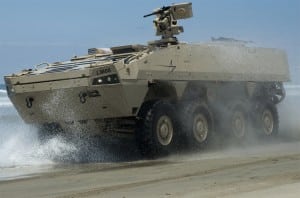
Lockheed Martin [LMT] has put forward an entrant for the Marine Corps’ amphibious combat vehicle program, but it’s not the Havoc 8x8 armored modular vehicle they developed with Finnish company Patria and marketed together for four years.The U.S.-based defense giant and European vehicle manufacturer broke off their partnership before the former submitted its bid in May, Lockheed Martin spokesman John Kent told Defense Daily.Because Lockheed Martin is not an original equipment manufacturer of combat vehicles, it likely partnered with another firm…













